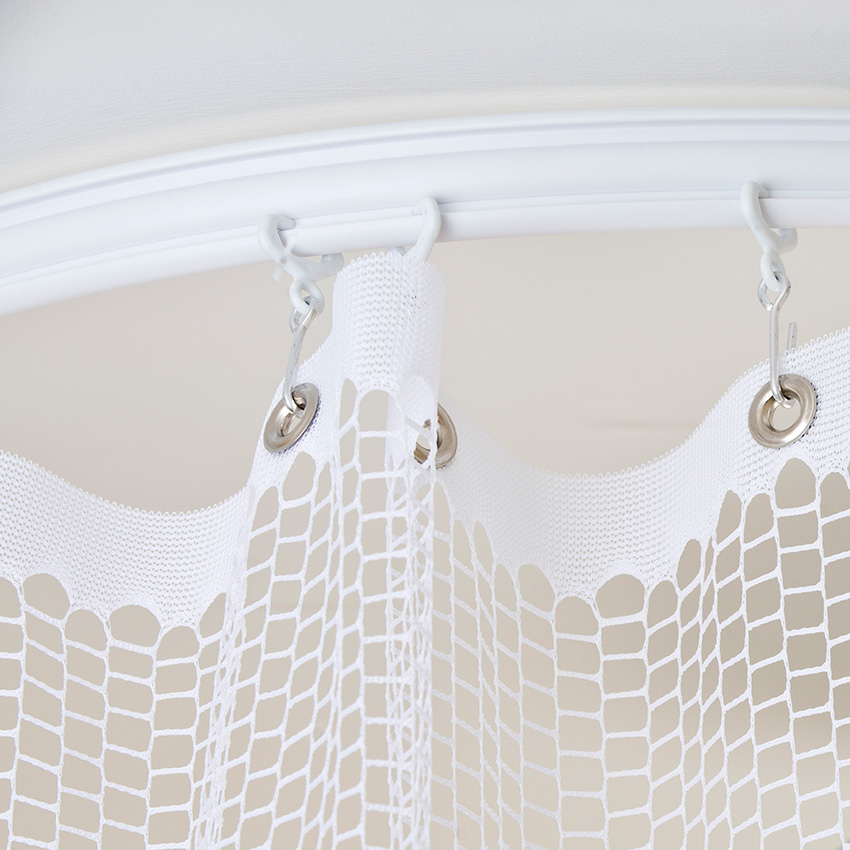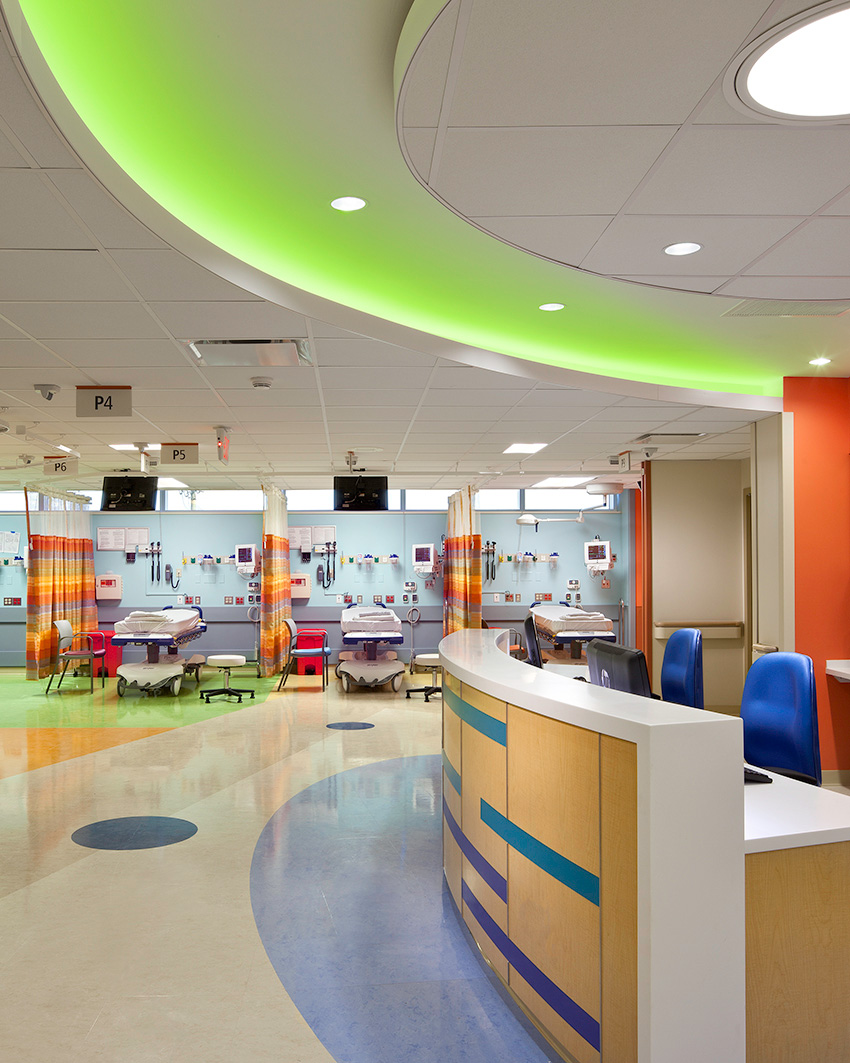Health Care: Better Designs for Better Care
Designs That Enhance Durability, Safety, and Healing
Design elements are not just for aesthetics and noise reduction; they can also enhance the health, safety, and welfare of occupants. Health-care facilities are busy places, filled with machines, carts, and people day after day. Many people who visit health-care facilities are ill or accompanying someone who is ill, which can cause anxiety and stress. A good design will contribute to health, safety, and welfare by helping provide a calming environment for patients and loved ones and also preventing HAIs. Design elements using high-quality materials offer damage protection and fire protection and can promote patient safety for specific populations.
Providing a Positive, Comforting Environment for Healing
Large walls in a facility provide a blank canvas for aesthetically pleasing images and colors. According to Robert Niemenen, in an article published by interiors+sources, art work on the walls of health-care facilities can provide a positive impact on patients entering a facility for treatment.1
Wall protection and panels can also be canvases for motivational art work or statements, or colors and images designed to allow patients to feel they are in a calm, soothing place, such as out in nature viewing a snowcapped mountain or walking through a field of flowers. Cheerful or calming colors and images can help reduce stress for both patients and their loved ones. Stress and anxiety induced by health situations coupled with a fear of the sterile, uninviting setting of a hospital facility can make treatment more difficult or create a barrier for those seeking help. Calming or inspiring images can be customized to reflect natural scenes from a certain geographical area or fit areas that cater to certain demographics. For example, the walls of a pediatrics center could include art that is more children focused. At Cooks Children’s Medical Center in Fort Worth, Texas, for example, each area has a theme and accompanying art work. Two elevator cabs were renovated and incorporate the custom “flying hat” theme designed by Andy Keller, extending the theme from the adjacent area. The brightly colored hats against a blue sky dotted by white clouds help lift the spirits of children and parents who have to come to the facility for doctor’s visits or treatments.
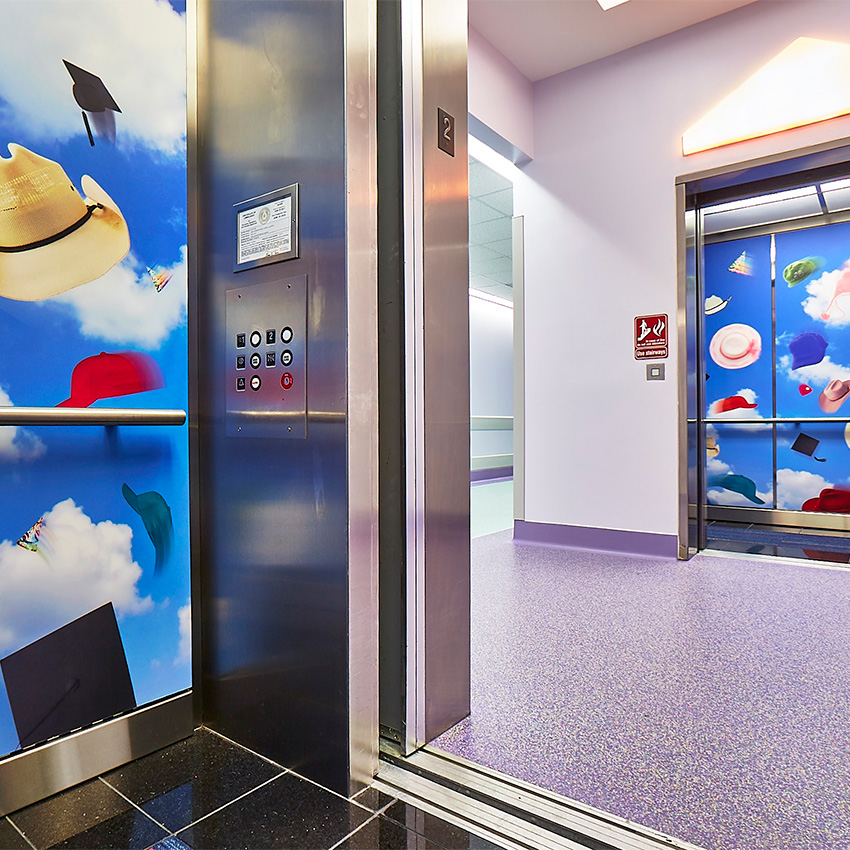
Photo courtesy of Inpro
Colorful, aesthetically pleasing wall-protection materials provide protection as well as decoration.
Providing an aesthetically pleasing space is most important in areas like atriums and waiting areas, which are often the first places patients see when they enter a health-care facility. By providing a warm and inviting space full of colors and lights, patients and their loved ones will feel more at ease, making it easier for hospital staff to meet their needs.
Reducing the Risk of HAIs
While patients go to hospitals to get well, the risk of HAIs is a real concern and can be very dangerous. According to the CDC, on any given day, approximately one in every 25 patients has at least one HAI.2
Doors and Cubicle Curtains
Germs can be spread in many ways in health-care facilities. These buildings have high occupancy rates from patients, staff, and visitors. As people pass through the facility, they often touch doors, door handles, and walls. By specifying doors that are easy to clean, health-care staff can help prevent the spread of germs and bacteria. Quality products with bacterial and fungal-resistant properties also contribute to patient health and safety. Doors can be tested using standards ASTM G22 (1996) and ASTM T21 (2013). ASTM G22 is a test method for determining the resistance of plastics to bacteria. It is designed to test the resistance of synthetic polymeric materials, such as molded materials or surface-treated articles, to bacterial attack.
Cubicle curtains and tracks not only provide sound reduction and noise control for patients but also allow for patient privacy to help uphold Health Insurance Portability and Accountability Act (HIPAA) laws. They also have the potential to reduce HAIs. Cubicle curtains and tracks with hinged loading systems and panels that easily snap into place can assist with laundering and inventory maintenance. This is not only beneficial to patients but also to nurses who have to regularly remove curtains for cleaning. Systems with curtains that snap into place allow for easy removal and can cut changeover time by 60 to 80 percent when compared to a standard carrier-and-hook style system. Frequently laundering curtains can reduce the chance of HAIs in a hospital.
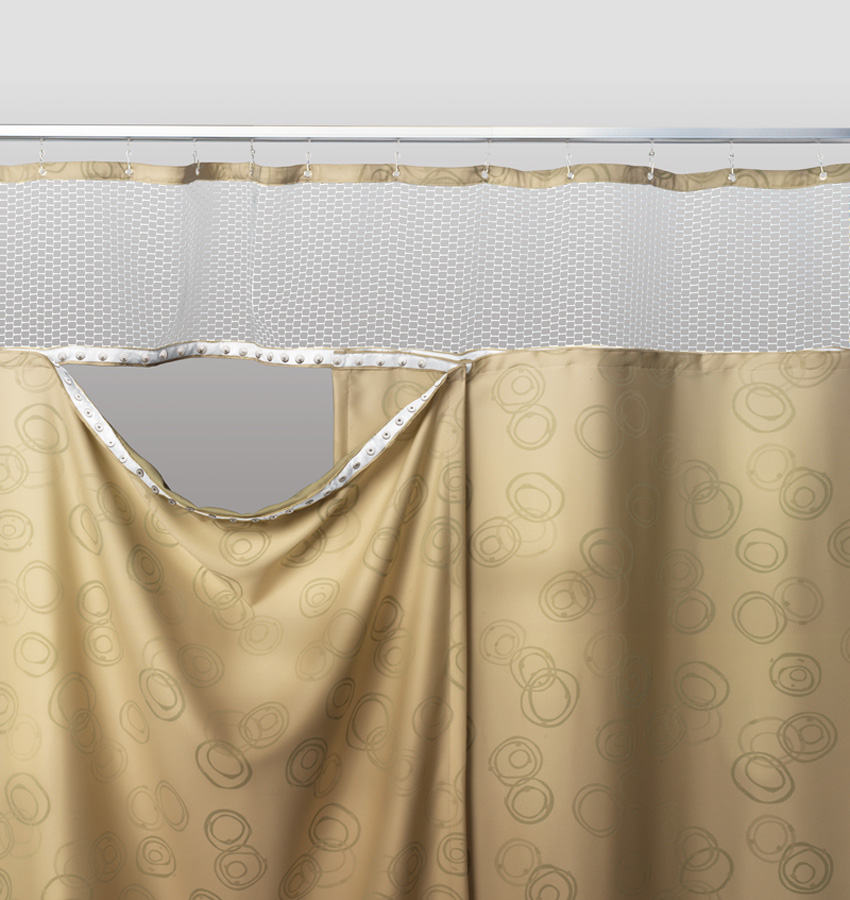
Photo courtesy of Construction Specialties
Easy-to-remove cubicle curtains allow for more frequent laundering and also reduce strain on health-care professionals who have to regularly replace them.
Walls and Wall Protection
Walls and wall-protection materials can be designed to fend off stains, marks, and vandalism. By specifying materials that are easy to clean, hospital staff can wipe down surfaces using standard cleaning agents and reduce the transmission of germs and bacteria. Wall-protection products can be tested using ASTM D-1308 to check for chemical and stain resistance. Products that meet or exceed this standard offer superior stain resistance and can stand up to harsh cleaning agents. Wall protection materials can also be tested using ASTM D-4060-07, which tests products for abrasion resistance, and ASTM G-22-76/G21-96, which tests resistance to fungal growth. Walls and wall-protection products can be tested and certified to the Wallcoverings Association Sustainability Standard (NSF/ANSI 342).
Ceilings
When most of us think of cleaning, we tend to focus on floors, table surfaces, and perhaps even walls because they are in our direct line of sight. For patients in health-care facilities who spend a lot of time lying in bed, especially when being transported, the ceiling is often in their direct line of sight. A dirty or stained ceiling is not only unhygienic, but it also can contribute to a patient’s perception of the sanitation of the facility and the environment. Dirt or stains on the ceiling may cause anxiety for patients who are trying to recover. Ceiling panels that are highly cleanable and consist of stain- and water-resistant surfaces are ideal for patient rooms as well as labs, cleanrooms, and NICUs where cleanliness is of utmost importance. In addition to being hygienic and reducing the potential for HAIs, clean ceilings may reduce stress for patients. Specifying ceiling materials and finishes, such as those that are easy to clean and resistant to moisture intrusion and mold, can help prevent HAIs and improve patient comfort and welfare, as well.
Damage Protection
In high-traffic areas that see heavy use, the walls and corners of corridors and lobbies and doors that lead to various spaces in facilities have the potential to be damaged due to foot traffic, transport of patients, and cart activity.
One way to mitigate damage to walls is to use materials that protect them from the start. Using sturdy wall protections to cover surfaces like drywall can reduce drywall breakage, decreasing the amount of dust and debris in a facility, and positively affect patient safety and wellness. Flexible wall protection can be applied in large sheets and encapsulate any dust and debris caused by cracked drywall underneath the protection. These come in various textures and colors and also can reduce the visibility of unsightly scuffs and marks.
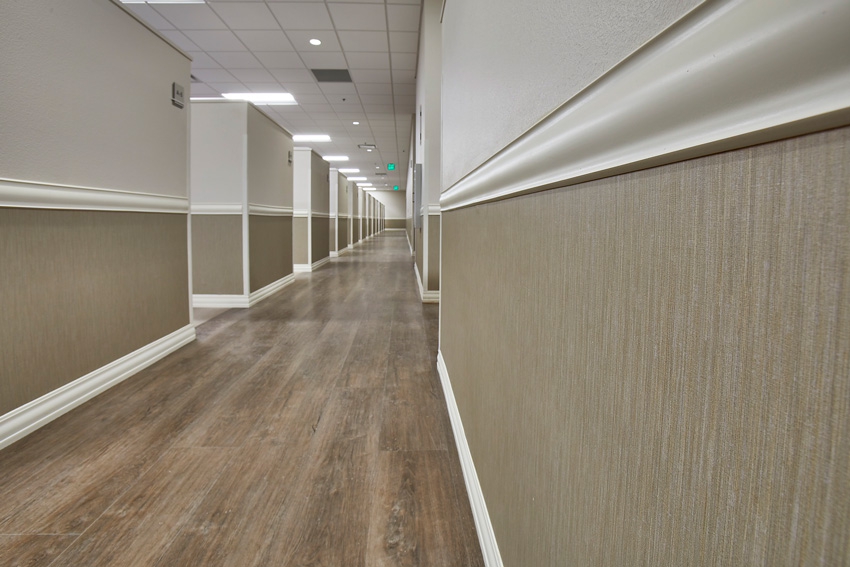
Image courtesy of Inpro
Shown is an installation of flexible wall protection at the new St. Vincent de Paul Family Resource Center in Phoenix.
Notice

CertainTeed.com/TargetedAcoustics

www.c-sgroup.com/cubicle-curtains-and-tracks/snap-lock-cubicle-curtains






